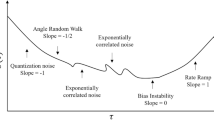Abstract
An extended robust independent components analysis algorithm based on cumulants is applied to identify vibrational alarm signals generated by soldier termites (reticulitermes grassei) from background noise. A seismic accelerometer is employed to characterize acoustic emissions. To support the proposed technique, vibrational signals from a low cost microphone were masked by white uniform noise. Results confirm the validity of the method, taken as the basis for the development of a low cost, non-invasive, termite detection system.
Access this chapter
Tax calculation will be finalised at checkout
Purchases are for personal use only
Preview
Unable to display preview. Download preview PDF.
Similar content being viewed by others
References
Robbins, W., Mueller, R., Schaal, T., Ebeling, T.: Characteristics of acoustic emission signals generated by termite activity in wood. In: Proceedings of the IEEE Ultrasonic Symposium, pp. 1047–1051 (1991)
Mankin, R., Fisher, J.: Current and potential uses of acoustic systems for detection of soil insects infestations. In: Proceedings of the Fourth Symposium on Agroacoustic, pp. 152–158 (2002)
Connétable, S., Robert, A., Bouffault, F., Bordereau, C.: Vibratory alarm signals in two sympatric higher termite species: Pseudacantotermes spiniger and p. militaris (termitidae, macrotermitinae). Journal of Insect Behaviour 12, 90–101 (1999)
Röhrig, A., Kirchner, W., Leuthold, R.: Vibrational alarm communication in the african fungus-growing termite genus macrotermes (isoptera, termitidae). Insectes Sociaux 46, 71–77 (1999)
Mankin, R., Osbrink, W., Oi, F., Anderson, J.: Acoustic detection of termite infestations in urban trees. Journal of Economic Entomology 95, 981–988 (2002)
Puntonet, C.: New Algorithms of Source Separation in Linear Media. PhD thesis, University of Granada, Department of Architecture and Technology of Computers, Spain (1994)
Mansour, A., Barros, A., Onishi, N.: Comparison among three estimators for higher-order statistics. In: The Fifth International Conference on Neural Information Processing, Kitakyushu, Japan (1998)
Mansour, A., Ohnishi, N., Blind, C.P.: multiuser separation of instantaneous mixture algorithm based on geometrical concepts. Signal Processing 82, 1155–1175 (2002)
Puntonet, C., Mansour, A.: Blind separation of sources using density estimation and simulated annealing. IEICE Transactions on Fundamental of Electronics Communications and Computer Sciences E84-A (2001)
Hyvärinen, A., Oja, E.: Independent Components Analysis: A Tutorial. Helsinki University of Technology, Laboratory of Computer and Information Science (1999)
Lee, T., Girolami, M., Bell, A.: A unifying information-theoretic framework for independent component analysis. Computers and Mathematics with Applications 39, 1–21 (2000)
Zhu, J., Cao, X.R., Ding, Z.: An algebraic principle for blind source separation of white non-gaussian sources. Signal Processing 79, 105–115 (1999)
Cardoso, J.: Blind signal separation: statistical principles. Proceedings of the IEEE 9, 2009–2025 (1988)
Górriz, J.: Hybrid Algorithms for Time-Series Modelling Using AR-ICA Tecnniques. PhD thesis, University of Cádiz, Department of Systems’ Engineering and Electronics, Spain (2003)
Ham, F., Faour, N.: Infrasound Signal Separation using Independent Component Analysis. Sponsored by the Boeing Company, Contract No. 7M210007 (2002)
Hinich, M.: Detecting a transient signal by biespectral analysis. IEEE Trans. Acoustics 38, 1277–1283 (1990)
Nykias, C., Mendel, J.: Signal processing with higher-order spectra. IEEE Signal Processing Magazine, 10–37 (1993)
Mendel, J.: Tutorial on higher-order statistics (spectra) in signal processing and system theory: Theoretical results and some applications. Proceedings of the IEEE 79, 278–305 (1991)
Swami, A., Mendel, J., Nikias, C.: Higher-Order Spectral Analysis Toolbox User’s Guide (2001)
Author information
Authors and Affiliations
Editor information
Editors and Affiliations
Rights and permissions
Copyright information
© 2004 Springer-Verlag Berlin Heidelberg
About this paper
Cite this paper
de la Rosa, J.J.G., Puntonet, C.G., Górriz, J.M., Lloret, I. (2004). An Application of ICA to Identify Vibratory Low-Level Signals Generated by Termites. In: Puntonet, C.G., Prieto, A. (eds) Independent Component Analysis and Blind Signal Separation. ICA 2004. Lecture Notes in Computer Science, vol 3195. Springer, Berlin, Heidelberg. https://doi.org/10.1007/978-3-540-30110-3_142
Download citation
DOI: https://doi.org/10.1007/978-3-540-30110-3_142
Published:
Publisher Name: Springer, Berlin, Heidelberg
Print ISBN: 978-3-540-23056-4
Online ISBN: 978-3-540-30110-3
eBook Packages: Springer Book Archive




